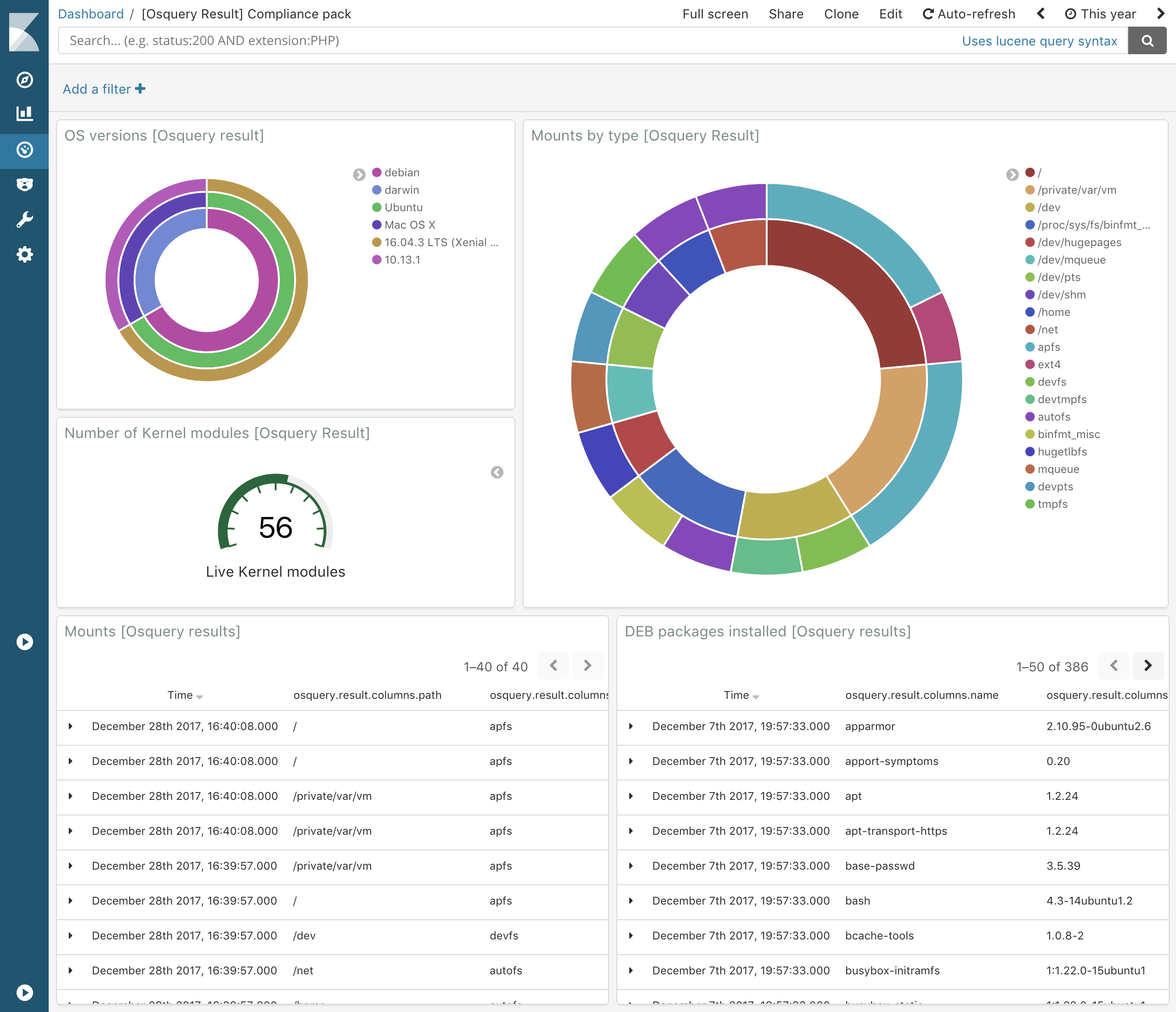

Osqueryi and osqueryd are independent tools. It can also be used instead of the operating system’s service manager to start/stop/restart osqueryd. osqueryctl: A helper script for testing a deployment or configuration of osquery.osqueryd: A daemon for scheduling and running queries in the background.osqueryi: The interactive osquery shell, for performing ad-hoc queries.Installing osquery gives you access to the following components: If this appeals to you, you’ll love using osquery as a system security monitoring and intrusion detection tool for your server. | type | user | tty | host | time | pid | If it’s not, you should investigate where that login came from.Output+-+-+-+-+-+-+ In this output, there is one real user account logged into the machine, and it’s from a known IP address. In this section, I’ll show you how you can run a few queries to extract some information.

But, in cases, you’d like to do that, osqueryi can help you write quick queries to gather data. Scheduling is great as you can’t always script your queries or repeat them every now and then. If you’d like to read more about the configuratio in osquery, you can use this link: osquery-configuration Ad-Hoc Queries Using osqueryi You can see how specific the queries are - for example, detecting the change of UAC to be disabled. Here’s a list of a few queries in the windows-hardening pack. Let’s uncomment the packs we do have and see if we can get them to work. Here’s a list of the packs which are included in our default installation (though not all of them are applicable to our installation): Packs can allow you to run specific queries. This is quite useful and can help identify the system or avoid information that’s repetitive but equally important. The results from these queries are going to be appended to every output of your scheduled query. Decorators can add or append additional information to the queries you execute or schedule.
Osquery conf windows#
Here’s a look at my flags file, in which I’ve added a few settings to enable verbose standard outputs, windows events, along with the ability to run unsafe queries. You can open your flags file and add some options in there. By default, there are no flags applied to your interactive shell or daemon. Similarly, we have the osquery.flags file which can have the flags you’d use on the command line.
Osquery conf download#
Head over to this link in order to download an MSI package for osquery. Only the installation and the availability of system tables should be different - the rest should be the same.
Osquery conf free#
You’re free to test the tool on your choice of operating system. You can ship those off to Splunk, ElasticSearch (via LogStash), or whatever solution you’d like.ĭisclaimer: For the sake of this article, I’ll be covering osquery on a Windows machine. The logs generated from these queries are also stored for aggregation, normalization, storage, or analysis with a SIEM solution. The background daemon tasks registers as a service and can run scheduled queries without distraction.
Osquery conf install#
Installing osquery (available here) can help you install the following components at the same time: Where do you run these commands? Neither did I show you any output here. SELECT pid, name, cmdline FROM processes LIMIT 5


 0 kommentar(er)
0 kommentar(er)
